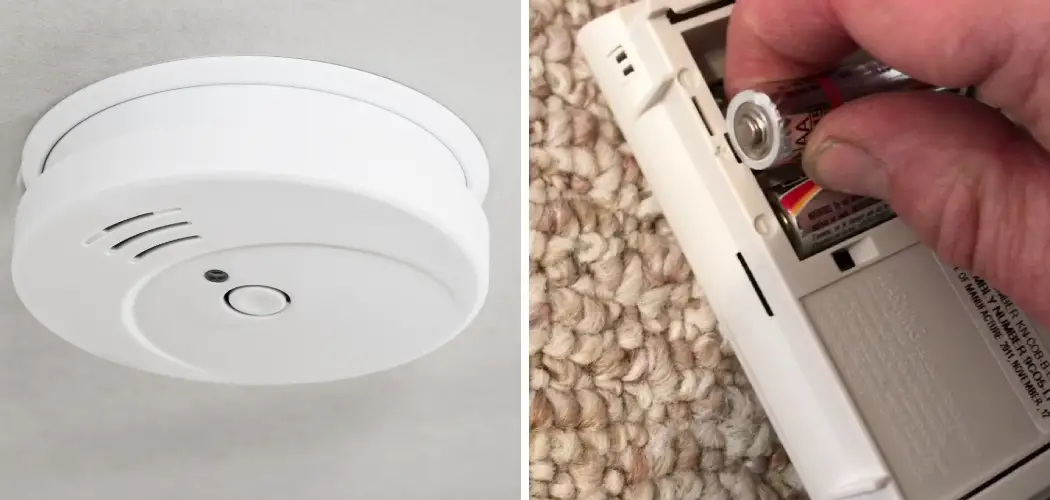Carbon monoxide detectors are essential for home safety, as they can detect the presence of deadly carbon monoxide gas in your home. However, like any other electronic device, they require regular maintenance, and replacing the batteries is an important part of it.
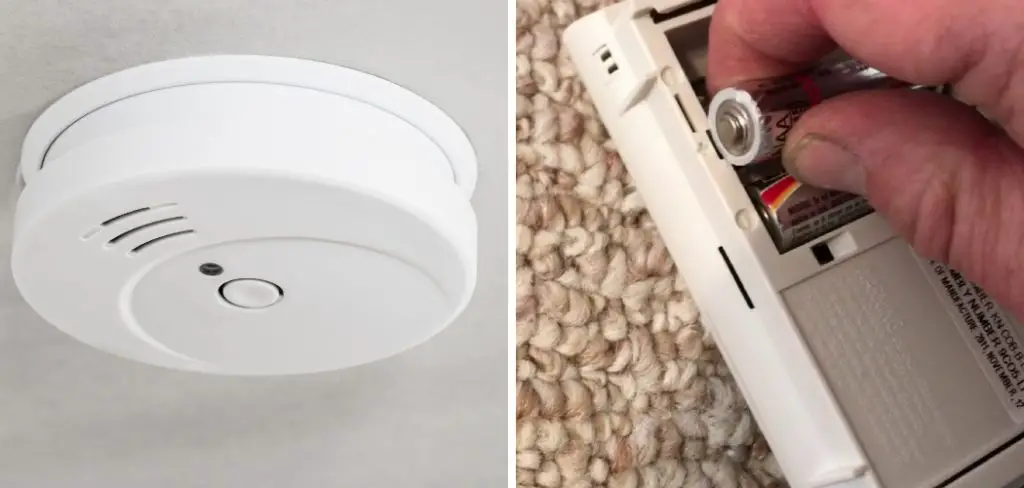
In this guide, we will explain how to change battery in carbon monoxide detector to ensure that it continues to function properly and keep you and your family safe.
Necessary Items
Before we begin, make sure you have the following items ready:
- Replacement batteries (ensure they are the right type and size for your detector)
- Screwdriver (if necessary)
- Clean cloth or paper towel
12 Steps on How to Change Battery in Carbon Monoxide Detector
Step 1: Know When to Replace the Battery
Before we dive into the actual process of changing the battery, it is important to know when it’s time to do so. Most carbon monoxide detectors have a low battery warning feature that will alert you when the battery needs to be replaced.
This can be in the form of a beeping sound, flashing light, or display message. Additionally, it is recommended to replace the batteries in your detector at least once a year.
Step 2: Find the Battery Compartment
Locate the battery compartment on your carbon monoxide detector. It is usually located at the back or side of the device and can be opened by sliding or twisting a cover. If you are unsure, refer to the manual provided by the manufacturer.
Step 3: Remove Old Batteries
Once you have accessed the battery compartment, remove the old batteries by gently pulling them out. If the batteries are held in place with a clip or bracket, release them using your screwdriver if necessary.
Step 4: Clean the Battery Compartment
Before inserting the new batteries, use a clean cloth or paper towel to wipe down the battery compartment. This will remove any dust or debris that may have accumulated over time and ensure a better connection with the new batteries.
Step 5: Check Battery Polarity
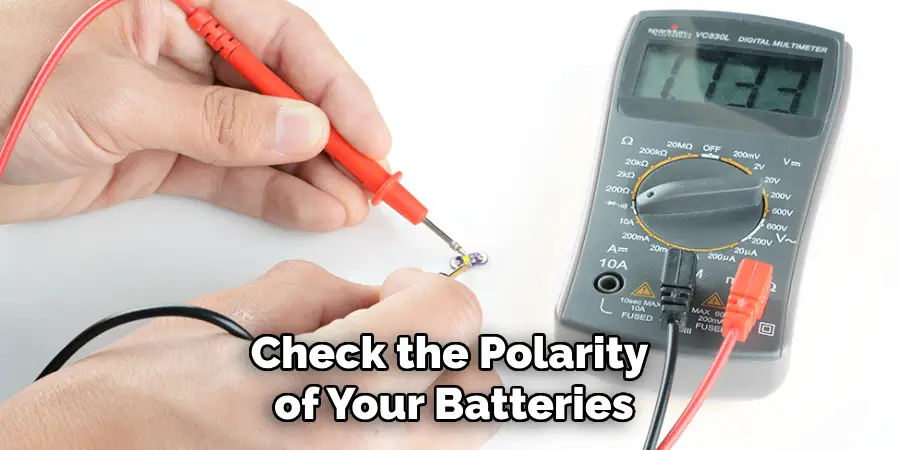
It is important to check the polarity of your batteries before inserting them into the detector. The positive (+) and negative (-) symbols on the batteries should match the markings in the battery compartment. If they do not, flip the batteries over.
Step 6: Insert New Batteries
Carefully insert the new batteries into the compartment, making sure they are securely in place. Again, refer to your manual if you are unsure of which direction to insert the batteries. Also, make sure the batteries are not expired.
Step 7: Close Battery Compartment
Once the new batteries are inserted, close the battery compartment cover securely. This will ensure that the batteries stay in place and maintain a proper connection with the detector. Even if your detector is designed to still function without the cover, it is recommended to have it firmly closed for safety reasons.
Step 8: Test the Detector
After replacing the batteries, it is important to test your carbon monoxide detector to ensure it is functioning properly. Follow the testing instructions provided by the manufacturer and make sure all alarms are working correctly.
Step 9: Reset the Detector
If your detector has a reset button, press it after replacing the batteries. This will ensure that any low battery warnings or errors are cleared and the detector is ready for use. So, if your detector continues to beep or displays a low battery warning after replacing the batteries, try resetting it.
Step 10: Dispose of Old Batteries Properly
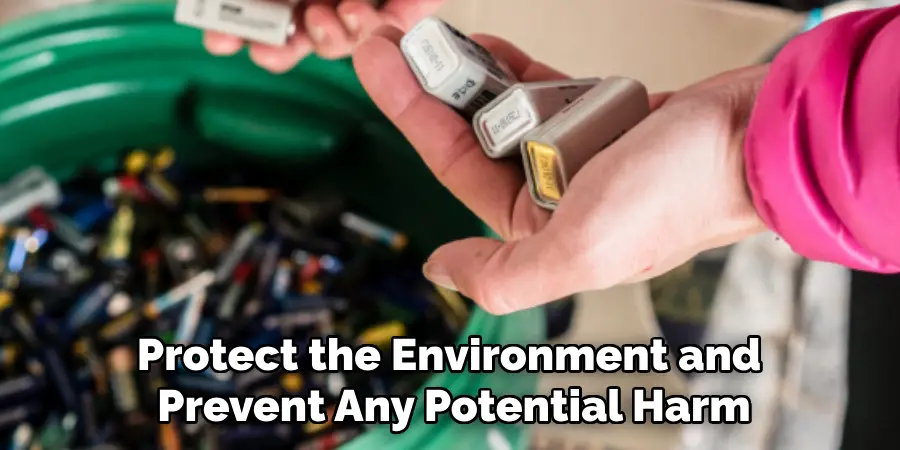
Properly dispose of the old batteries in accordance with your local recycling guidelines. Many states have laws that require safe disposal of batteries due to their hazardous materials. With proper disposal, you can help protect the environment and prevent any potential harm.
Step 11: Note Battery Replacement Date
To ensure that you remember when to replace the batteries next time, it is helpful to note down the date of replacement. You can either write it on a piece of paper and attach it to your detector or use a reminder app on your phone.
Step 12: Regularly Check and Replace Batteries
Lastly, make a habit of regularly checking your carbon monoxide detector and replacing the batteries as needed. This will help ensure its proper functioning and keep you and your family safe from potential carbon monoxide poisoning.
Changing the batteries in your carbon monoxide detector is a simple process that can help ensure the safety of your home and loved ones. By following these steps and regularly maintaining your detector, you can have peace of mind knowing that it will continue to detect any dangerous levels of carbon monoxide. Remember, safety should always be a top priority when it comes to home maintenance.
9 Safety Measures
1) Wear Protective Gear

Before starting the process of changing the battery in your carbon monoxide detector, make sure to wear protective gear such as gloves and safety glasses. This will protect you from any potential hazards or chemicals that may be present in the device.
2) Keep Children and Pets Away
During the battery replacement process, it is important to keep children and pets away from the area. This will prevent any accidents or injuries from occurring and also avoid distraction while working with the detector.
3) Follow the Manufacturer’s Instructions
Always refer to the manual provided by the manufacturer for specific instructions on how to change the battery in your carbon monoxide detector. Every model may have different steps, so it is important to follow them carefully.
4) Use the Right Batteries
Make sure to use the recommended batteries for your carbon monoxide detector. Using the wrong type of battery can affect its performance and may even damage the device. Even if the batteries fit, it is important to use the ones specified by the manufacturer.
5) Properly Dispose of Old Batteries
As mentioned before, it is crucial to dispose of old batteries properly. Not only will this protect the environment, but it will also prevent any potential hazards and follow proper recycling guidelines in your area.
6) Test Your Detector Regularly
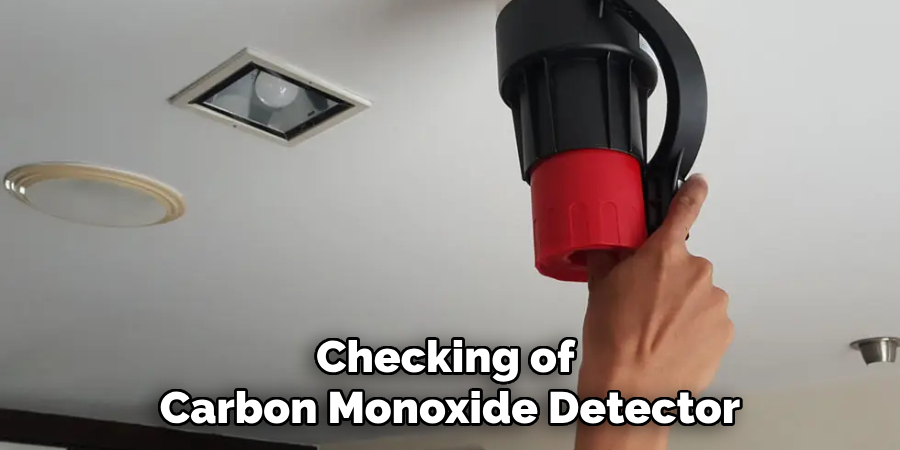
In addition to changing the batteries, it is important to regularly test your carbon monoxide detector. This will ensure that it is functioning properly and detecting any dangerous levels of carbon monoxide in your home.
7) Have Extra Batteries on Hand
It is always good to have extra batteries on hand in case of an emergency or if you forget to replace them on time. This will ensure that your detector continues to function properly and keep you safe. If your detector uses rechargeable batteries, make sure to have a spare set charged and ready for use.
8) Replace Your Detector If Needed
Carbon monoxide detectors have a lifespan of around 5-7 years. After this time, it is recommended that they be replaced with a new one to ensure maximum safety. You can check the expiration date on your detector or refer to the manual for more information.
9) Have a Carbon Monoxide Detector on Every Level
It is important to have a carbon monoxide detector on every level of your home, including the basement and attic. This will provide maximum coverage and increase your chances of detecting any potential danger. Also, make sure to test all detectors regularly and replace batteries as needed.
Having a properly functioning carbon monoxide detector is crucial for the safety of your home and loved ones. By following these safety measures on how to change battery in carbon monoxide detector, you can ensure that your detector is working effectively and providing reliable protection against carbon monoxide poisoning. Remember to always prioritize safety when it comes to home maintenance.
8 Things to Avoid
1) Don’t Use Expired Batteries

Using expired batteries can affect the performance of your carbon monoxide detector and compromise its ability to detect dangerous levels of carbon monoxide. Always check the expiration dates on your batteries before using them.
2) Don’t Mix Old and New Batteries
Mixing old and new batteries in your detector can also affect its performance. It is important to use all new batteries at the same time and avoid mixing them with old ones. As mentioned before, it is recommended that all batteries be replaced at once.
3) Don’t Block the Air Vents
When installing or replacing batteries, make sure not to block any air vents on your carbon monoxide detector. These vents are crucial for detecting and measuring carbon monoxide levels in your home.
4) Don’t Ignore Low Battery Warnings
If your detector has a low battery warning, make sure to replace the batteries immediately. Ignoring this warning can leave you and your family at risk of potential carbon monoxide poisoning.
5) Don’t Use Rechargeable Batteries Unless Specified
Some carbon monoxide detectors may not be compatible with rechargeable batteries. Always refer to the manual and use only the specified type of battery for your detector. Even if they fit, using the wrong type of battery can affect its performance.
6) Don’t Install Near Heat Sources
Avoid installing your carbon monoxide detector near heat sources, such as stoves or heaters. This can cause false readings and affect its performance. It is important to install the detector in a cool, dry place.
7) Don’t Paint Over Your Detector
Painting over your carbon monoxide detector can also affect its performance. The paint can block the vents and interfere with its ability to detect carbon monoxide levels. It is important to keep the detector free of any obstructions.
8) Don’t Wait Too Long to Change Batteries
Lastly, do not wait too long to change the batteries in your carbon monoxide detector. It is important to replace them at least once a year or as recommended by the manufacturer. Neglecting to do so can put you and your family at risk of potential danger.
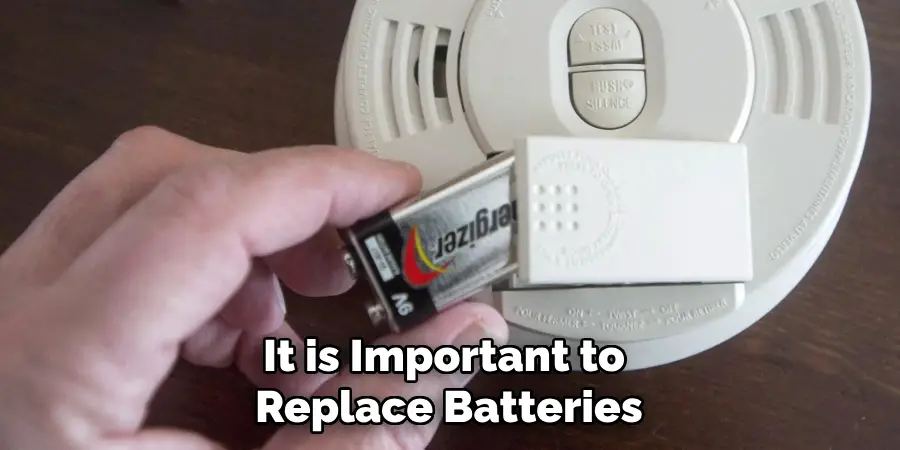
By avoiding these actions, you can ensure that your carbon monoxide detector is functioning properly and effectively protecting your home from potential hazards. Remember to always follow safety measures and avoid taking any shortcuts when it comes to your home’s safety. So, these are the important things you should keep in mind while changing the batteries of your carbon monoxide detector.
8 Additional Tips for Carbon Monoxide Safety
1) Have a Carbon Monoxide Detector in Your RV or Boat
If you have an RV or boat, it is important to have a carbon monoxide detector installed as well. These vehicles can produce carbon monoxide and put you at risk if not detected early. As with home detectors, make sure to test and replace batteries regularly.
2) Have a Plan in Case of Emergency
In addition to having a carbon monoxide detector, it is important to have an emergency plan in case of exposure. Make sure everyone in your household knows how to recognize the symptoms and what steps to take if they suspect carbon monoxide poisoning. This could include calling emergency services and evacuating the area.
3) Educate Yourself on Carbon Monoxide Sources
It is important to be aware of potential sources of carbon monoxide in your home, such as gas appliances, fireplaces, and generators. Make sure these are properly maintained and ventilated to prevent any buildup of carbon monoxide.
4) Keep Windows and Doors Open While Using Gas Appliances
When using gas appliances, such as stoves or ovens, make sure to keep windows and doors open for proper ventilation. This will help prevent any buildup of carbon monoxide in your home. For added safety, consider installing a vent hood above your stove.
5) Don’t Use Gas-Powered Tools Indoors
Gas-powered tools and equipment should never be used indoors. This includes items such as lawnmowers, generators, and pressure washers. These can produce dangerous levels of carbon monoxide if not used in a well-ventilated area.
6) Be Cautious When Using Fireplaces
When using a fireplace, make sure the flue is open and there is proper airflow. This will help prevent carbon monoxide from building up inside your home. It is also important to have your chimney inspected and cleaned regularly to ensure proper ventilation.
7) Don’t Leave Your Car Running in an Enclosed Space
Leaving your car running in an enclosed space, such as a garage, can quickly produce dangerous levels of carbon monoxide. Always make sure to park and turn off your car in a well-ventilated area.
8) Consider Installing Multiple Detectors
While one carbon monoxide detector is helpful, it may not be enough to cover your entire home. Consider installing multiple detectors in different areas of your house for added safety and early detection.
By following these additional tips on how to change battery in carbon monoxide detector, you can further protect yourself and your loved ones from potential carbon monoxide exposure. Remember to always prioritize safety and take necessary precautions to prevent any accidents or hazards in your home.
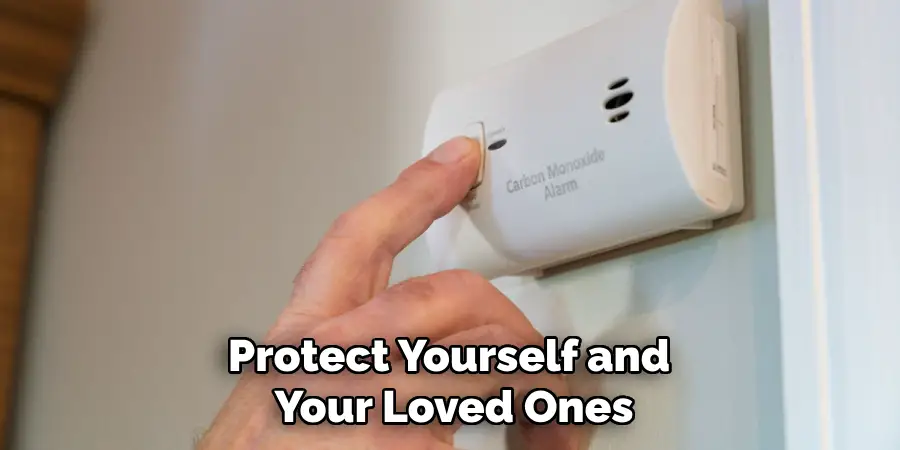
So, make sure to keep these tips in mind along with the tips for maintaining your carbon monoxide detector. Stay safe! Remember, your safety and that of your family should always come first.
Frequently Asked Questions
How Often Should I Replace the Batteries in My Carbon Monoxide Detector?
It is recommended that the batteries in your carbon monoxide detector be replaced at least once a year or as suggested by the manufacturer. However, it is important to also test your detector regularly and replace batteries if the low battery warning activates.
Can I Use Rechargeable Batteries in My Carbon Monoxide Detector?
It is important to check the manual for your specific detector, but in general, it is not recommended to use rechargeable batteries unless specified. Using the wrong type of battery can affect its performance and compromise your safety.
What Should I Do if My Carbon Monoxide Detector Goes Off?
If your carbon monoxide detector goes off, it is important to take immediate action. Leave the area and call emergency services. If you experience symptoms of carbon monoxide poisoning, seek medical attention right away. It is also important to ventilate the area by opening windows and doors before returning inside.
How Can I Tell if My Carbon Monoxide Detector Needs to be Replaced?
Most carbon monoxide detectors have a lifespan of 5-7 years. After this time, it is recommended that the entire detector be replaced. Additionally, if your detector is chirping or malfunctioning, it may be time for a replacement.
Always refer to the manufacturer’s instructions for specific guidelines on when to replace your detector. So, keep an eye out for any signs of a malfunctioning detector and replace it if necessary. Stay safe!
Can I Test My Carbon Monoxide Detector?
Yes, you can and should test your carbon monoxide detector regularly. Most detectors have a test button that sounds an alarm to ensure they are functioning properly. It is important to consult the manufacturer’s instructions for specific testing guidelines.
So, make sure to test your detector regularly to ensure it is functioning correctly and protecting you and your loved ones from potential harm.
Conclusion
Carbon monoxide is a silent killer that can be prevented with simple precautions and maintenance. By following these additional tips on how to change battery in carbon monoxide detector for carbon monoxide safety, along with proper maintenance of your detector, you can greatly reduce the risk of exposure and keep yourself and your family safe.
Remember to always prioritize safety and take necessary steps to prevent any potential hazards in your home. Stay informed, stay vigilant, and stay safe! So, be proactive and implement these tips for a safer home environment.

